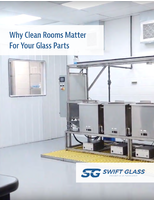Laser Scriber is based on ChromaDice(TM) DPSS laser platform.
Share:
Press Release Summary:
Designed for isolation and series interconnection of thin film solar cells, PV Series laser scribing system produces fine scribed lines with greater than 30 mW isolation. It can remove wide range of thin films from large glass, metal, or polymer substrates. Variety of wavelengths for different layer materials are available including 1,064, 532, 355, and 266 nm. Modular workstation can accommodate 1,300 x 1,300 mm glass sheet sizes.
Original Press Release:
JPSA Announces Thin Film Photovoltaic Laser Scribing Machines for Higher Conversion Efficiency and Throughput
Manchester, New Hampshire, USA -- With the current global shortage and increasing expense associated with manufacture of silicon wafer photovoltaic cells, new thin-filmon-glass solar panel alternatives are gaining popularity. J P Sercel Associates (JPSA), a global leader in industrial-grade laser systems for wafer processing and micromachining, announces the introduction of a new family of industrial laser scribing systems to meet the manufacturing requirements of this new technology.
Built on the successful ChromaDice(TM) DPSS laser platform, the new PV Series are Class 1 enclosed laser scribing systems for isolation and series interconnection of thin film solar cells. JPSA employs high peak power, short pulsed Diode Pumped Solid State (DPSS) laser sources to rapidly, selectively and accurately remove a wide range of thin films from large glass, metal or polymer substrates. A variety of wavelengths suitable for different layer materials are available including 1064nm, 532nm, 355nm and 266nm.
These systems used advanced laser technology scribing to rapidly and accurately
produce fine scribed lines with >30MOhm isolation. The range of applications includes
the following:
P1 Front Contact: Transparent Conducting Oxides (TCO) such as ITO, IZO, SnO2, and
ZnO2 can be scribed using 1064nm;
P2 Semiconductor: (a-Si,) Cadmium Telluride (CdTe,) and Copper Indium (gallium)
diselenide (CIS or CIGS.) can be scribed using 532nm or 1064nm;
P3 Back Contacts: Metals such as Al, Mo or Au can be scribed using 532nm or
1064nm;
Border deletion: Bulk deletion of all three layers to provide an edge isolation border
may be achieved using high power 1064nm lasers.
JPSA PV Series workstations are modular and scalable to accommodate glass sheet
sizes currently up to 1300 x 1300 mm. Panel throughput or Takt time on a single tool can be matched to the overall production requirement by adding more laser power.
In process, large sheets are mounted horizontally, aligned automatically and processed
in orthogonal directions. One axis is a traveling optics gantry with multiple scribing
beams mounted below the glass. The laser beam(s) transmit through the glass to the
scribing layer allowing debris extraction from the top and auto handling of the panel on the uncoated side. The other motion axis is the glass itself which is stepped through the machine in the other direction. Panel loading can be automatic from a conveyor, or manual according to manufacturing requirements.
JPSA is the world's leading designer, supplier, and systems integrator of laser materials processing workstations. JPSA products and services include UV excimer, DPSS and ultra-fast laser micromachining systems, UV and VUV laser beam delivery systems,
laser materials processing development, optical damage testing, and excimer laser
refurbishment services. JPSA operates a high-performance laser job shop as well as a
systems engineering and manufacturing business.
For more information, visit
www.jpsalaser.com, or
contact the company at
220 Hackett Hill Road,
Manchester, NH, 03102 USA;
Tel. 603.518.3200, fax 603.518.3298.




